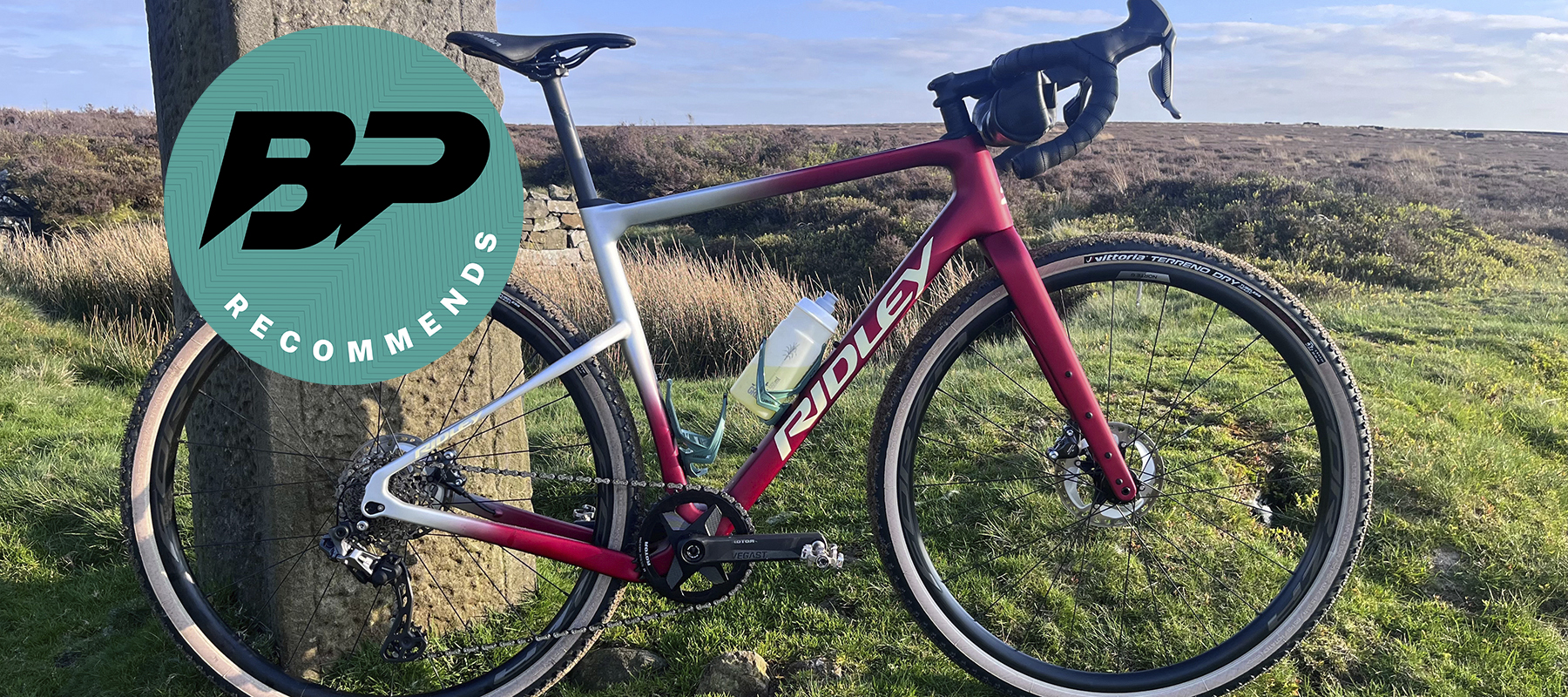Bike Perfect Verdict
With sure-footed manners, precise, nimble handling, and clever Classified gearing, this adventure bike is a seriously versatile and fun ride for a broad range of gravel riding.
Pros
- +
A smooth ride with impeccable off-road manners
- +
Lots of mounting options
- +
A comfortable, well-balanced riding position
- +
A near endless amount of spec and build options means plenty of choice
- +
Classified gearing gives a great mix of cadence-friendly gears but with a usable wide range
Cons
- -
Sizing isn't as straightforward as other brands
- -
The budget KMC chain works poorly with the rest of the drivetrain
- -
Not the cheapest in this spec
- -
Not available in the US
Why trust BikePerfect
For those of you who follow cyclocross, the name Ridley will be familiar. The Flemish brand is one of the biggest suppliers to the somewhat niche winter sport and has been for some time. They also have a long history of supplying top-tier road racing bikes for the World Tour. With a background in fast drop bar bikes, it's no surprise they've branched out into gravel with several models in the range. But will the Kanzo Adventure rank as one of the best gravel bikes?
The Kanzo was their first offering, which drew heavily from their Noah aero road bike and was a very focused race machine in a similar vein to uncompromising bikes like the Cervelo Aspero and Bianchi Impulso to cater to the growing gravel race scene. I've been testing the Ridley Kanzo Adventure, which takes elements from the original but in a more relaxed, comfortable, and versatile package with progressive geometry and lots of room for big tires.
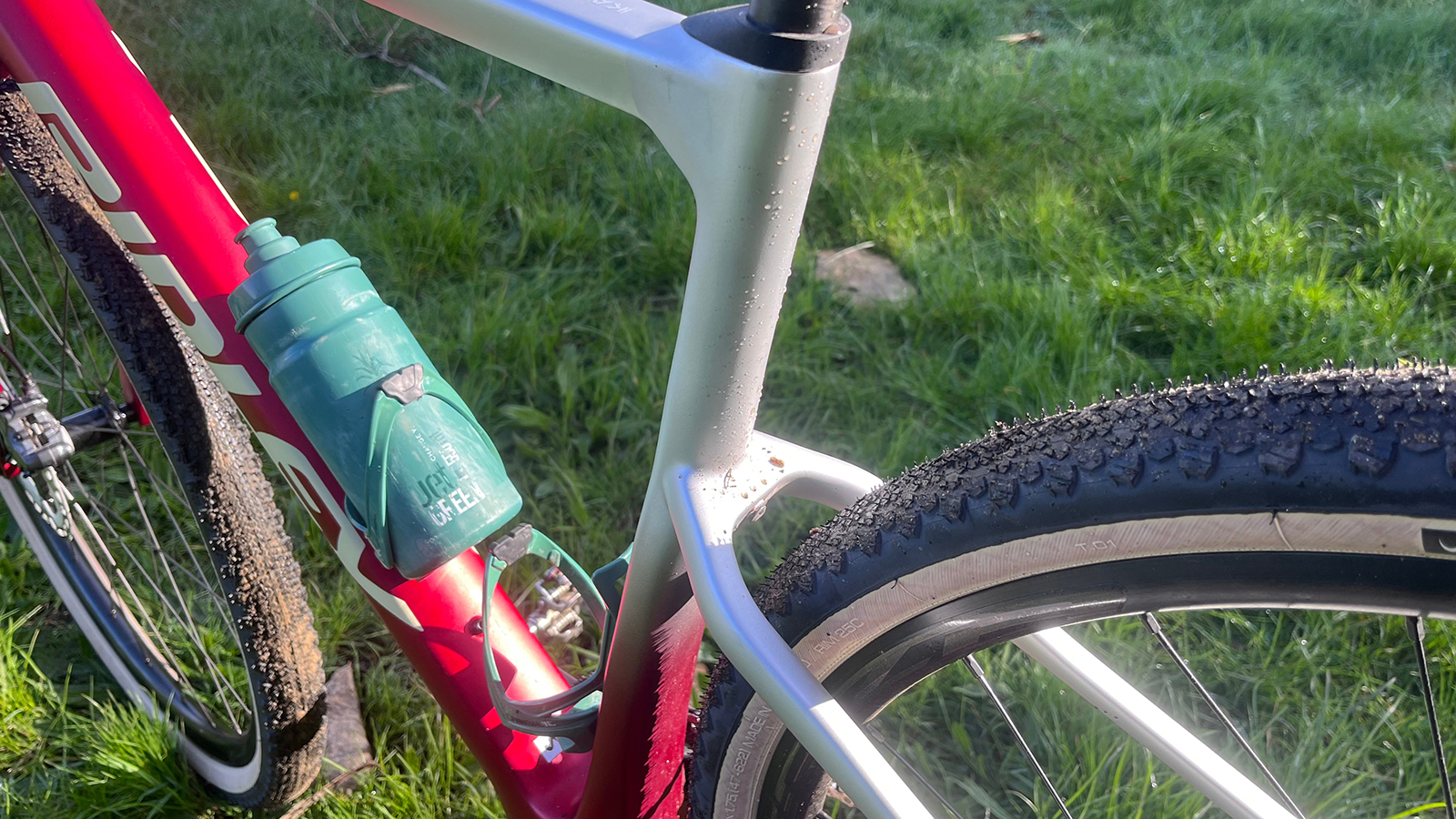
Sizing and geometry
Ridley offers the Kanzo Adventure in five sizes, from XS to XL. They size up bigger than most brands, so after checking the geo chart, I went for the Small frame size, which fitted perfectly with a stack of 569 and a reach of 387. It's worth noting that Ridley sells its bikes via bike shops, so if you're unsure about the size you need, you can always speak to a real person and get some help to ensure you get the right fit for you.
The Kanzo Adventure is also quite a step away from the Belgian brand's usual geometry. It shares more similarities with an MTB than a cyclocross or road bike. Its relatively long reach combined with a shorter stem means the steering is composed but not sluggish, perfect for long days in the saddle. For example, the reach figure is the same as the Argon 18 Dark Matter, which also has MTB-inspired geometry and is 14mm longer than the more road-biased Cervelo Aspero.
The long reach is combined with a long wheelbase of 1,041mm and 435mm chainstays. A lot of this is due to the big tires specced, which cannot be avoided, but the use of a shorter stem, a slack for gravel 70.5-degree head angle, and a steeper seat angle of 74 degrees puts you in an engaging position and avoids any sluggish handling characteristics. Ridley has also designed the front end to be compatible with a suspension fork. By making the standard carbon fork a little taller, a change to a sprung front end won't alter the geometry too much, and a RockShox Rudy XPLR can be added at purchase for £459.
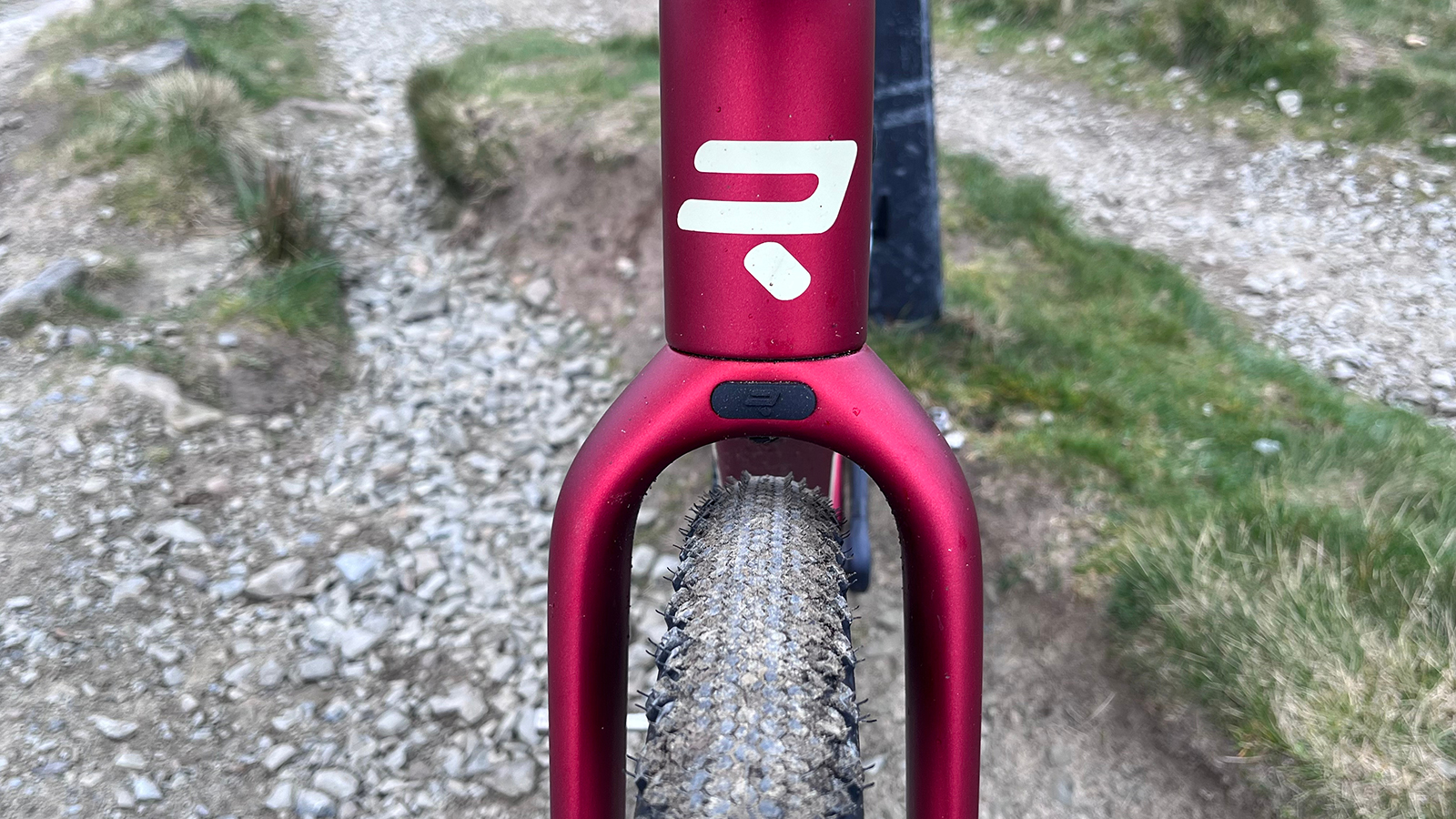
Design and features
One of the things that sets Ridley apart is its custom build options. Unlike most non-boutique brands, it offers a myriad of options, from custom paint colors and finishes to groupsets, wheels, finishing kits, and pretty much everything else. The bike I had on test had a classy looking silver to cherry red fade in a matt paint, which was very well finished. Should you fancy something different, there are plenty of options on Ridley's spec configurator that you can choose instead for a very reasonable surcharge, with the Fade version I had coming in at only £225 more than a stock finish.
The frame is a solid, stout-looking affair, with large, heavily shaped tube profiles, and aggressively low seatstays out back. Starting from the front, the bike's adventure intentions are clear, with the fork having triple bosses to mount bottles or luggage and being rated to carry 3kg of weight on each side. In addition to the extra storage, the fork also features routing for a dynamo front light and plenty of clearance for up to 700 x 54mm or 29 x 21” tires.
The array of bottle bosses continues onto the main frame. The downtube has four on the top, three underneath, and three more on the seat tube, which not only allows you to carry more bottles but also means you can mount the cages lower in the frame, which helps with accessibility when you're riding with a frame bag that fits in the front triangle.
The top tube also has mounts for a bento box or bag. These are hidden under a cover and recessed into the frame, which means you can actually use them as a strap mounting point if you'd rather store something there, like a small cylindrical bag or rolled-up clothing.
The frame tubes themselves are wide and aggressively shaped with various flat sections to help make mounting things easier and provide a stiff platform to deal with your pedaling inputs. A stiff frame sounds good in theory, but it will lead to fatigue on a long gravel ride. There are no such worries here, with its wide tires and super low, heavily shaped seatstays, it's actually a very smooth ride, which is almost at odds with its racy appearance.
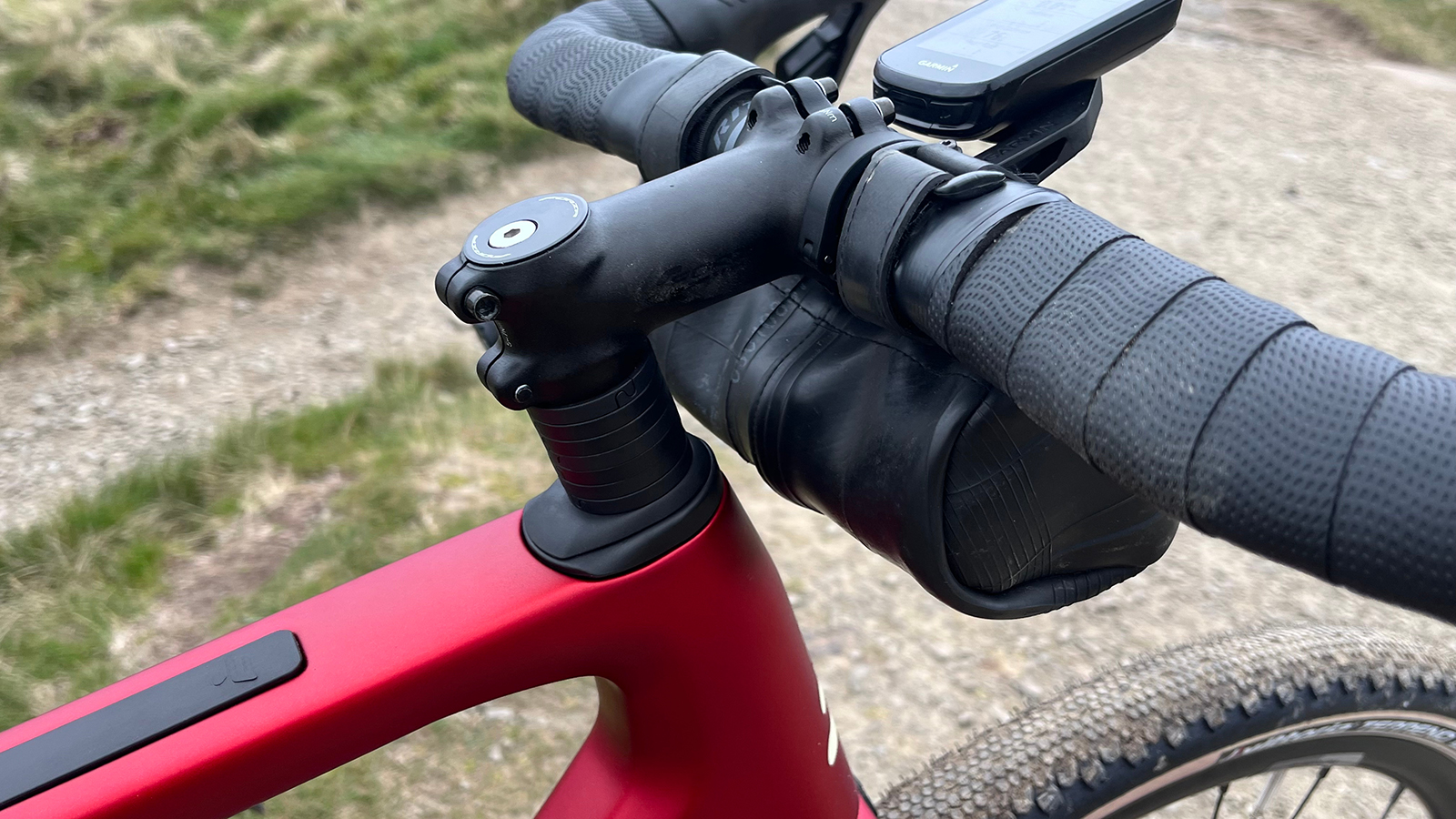
The bike has a very clean look, which is undoubtedly helped by having all of its cables routed internally through the headset. Such a setup might bring mechanic's nightmares and it certainly adds costs further down the line when it comes to replacing headsets and cables, but it performed flawlessly through testing with no annoying creaks or rattles that can plague some similar systems. The bottom bracket is a straightforward PF30 setup, though I'd rather see a standard or oversized T47 threaded option for longevity and simple servicing. Having said that, I had no noises at all during testing as it is.
There are mounts for mudguards too, ideal for those of us in the northern hemisphere currently coming out of the wettest winter on record. With all of the extra mounts and girthy construction, I was expecting this to be a bit of a beast on the scales, but the frame and fork (in size L) weigh a perfectly reasonable 1,775g, and the bike, in size S as tested, weighed 9kg.
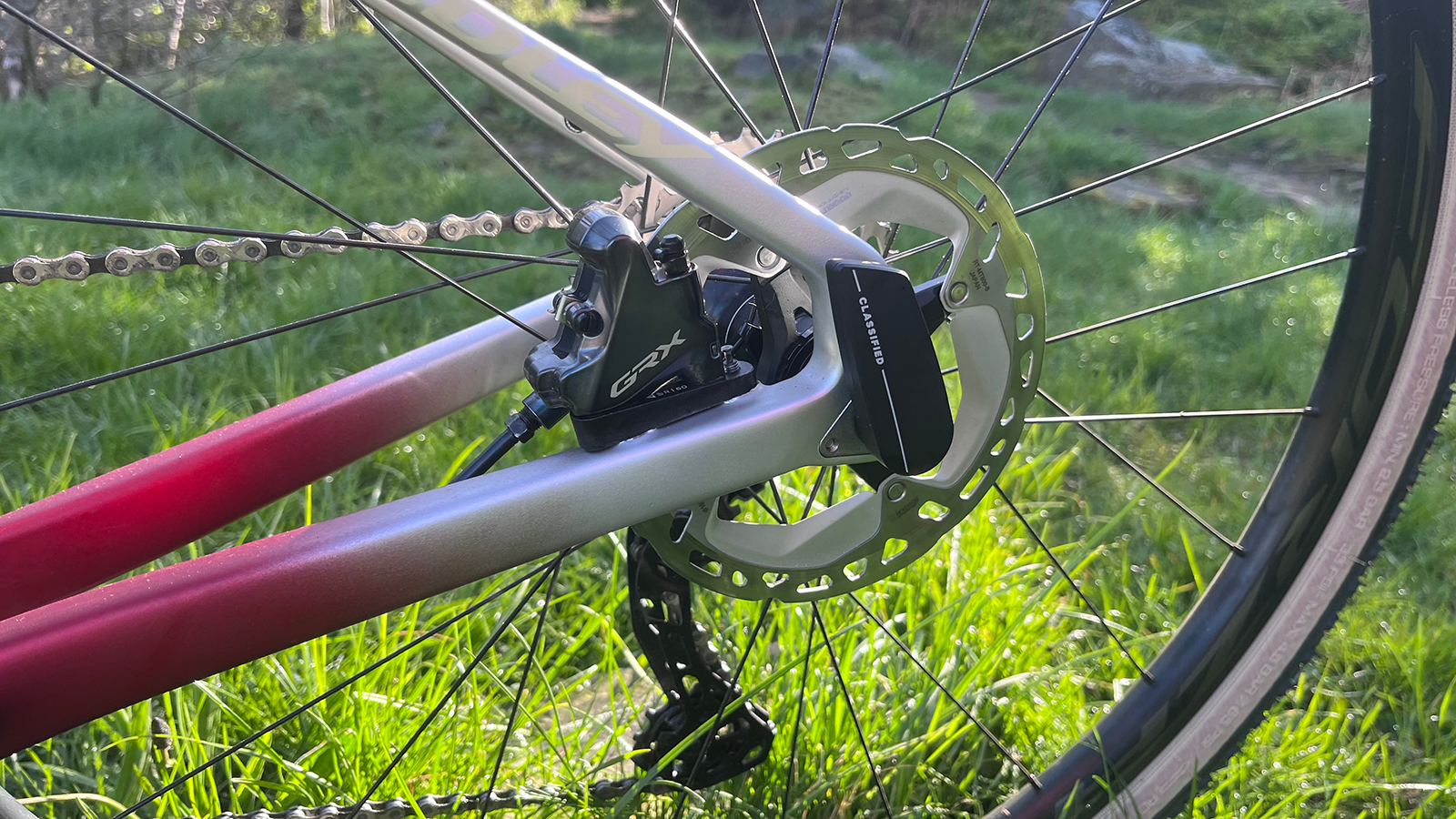
Components, pricing and build
The Kanzo Adventure range starts from $3,295 / £2,799 with a SRAM Apex 11-speed build, which is very keenly priced, but there are nearly endless options available when using the brand's configurator, which makes it difficult to compare the pricing like for like with other brands, especially when you consider that not many brands have the Classified system with integrated shifters available as standard. The version I tested was towards the top of the range at £6,096, which though certainly not cheap, I felt offered reasonably good value for the high level of tech.
I was lucky enough to be sent the top spec bike which is equipped with the brilliant Classified Powershift gear system. We have reviewed it here on BikePerfect previously, but for those of you who haven't seen it before, it basically replaces your front mech with a two-speed rear hub, so you get the simplicity, quietness, and chain retention properties of a 1x setup, with the same spread of gears as a 2x or double chainring setup. I've used the system before on a trail bike where it felt limited, but it was perfect on a bike like this.
It's not cheap, adding around £1,800 to the build cost, but if your budget allows, it's an upgrade you should seriously consider. I found that having closer ratio gears meant I could ride a much more comfortable cadence on long climbs, and for me, most adventures I yearn for would involve days in mountainous regions where this would be ideal. While it does give a slightly wider range of 530 percent over around 500 percent of a standard 1x option, the real bonus is the small gaps between the gear ratios, which make managing your cadence pace on climbs much more pleasant.
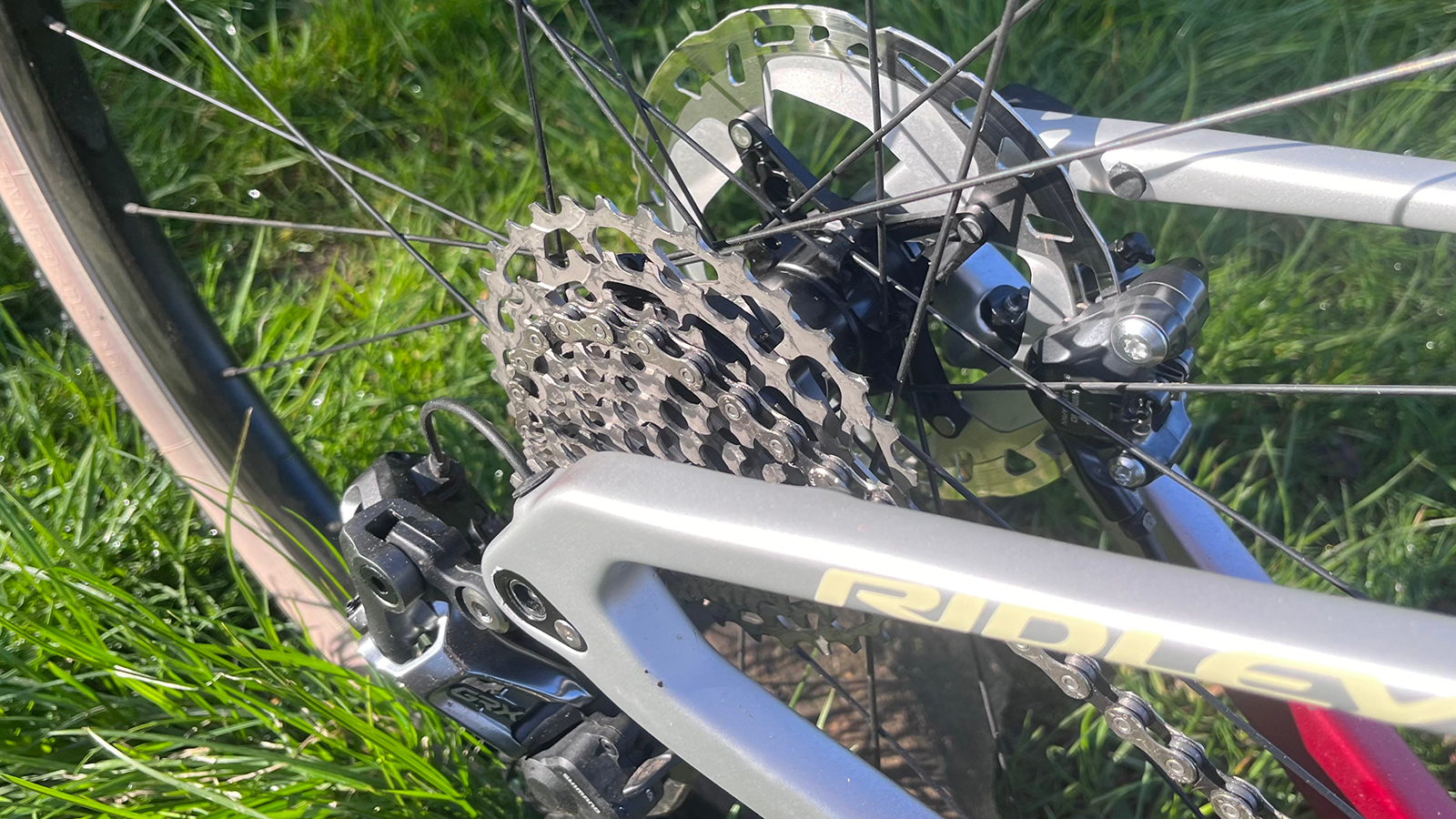
The shifters, brakes, and rear mech are from the excellent Shimano GRX RX815 11-speed Di2 groupset. The Classified system uses its own custom cassette with sprockets ranging from 11 to 34 teeth. This is matched to a KMC chain and a Rotor Vegast chainset running on a 30mm axle. Kudos also to Ridley for doing a stellar job of integrating the classified shifter and rear sensor. The shift unit is usually mounted under the tape, but it is the only brand so far that has the mechanism as part of the left-hand Di2 shifter. This makes for super simple operation using the standard shifter paddles, and the rear sensor is hidden neatly inside the dropout.
Wheels are Ridley's own Forza Norte with an alloy rim and are built with a Classified hub in the rear. They are the base option but are perfectly adequate with shallow 25mm deep rims with a 24mm internal diameter rim bed. They were a solid and reliable setup and came shod with Vittoria’s Terreno Dry TLR tire in a voluminous 47mm width. If you fancy something a bit fancier, a carbon wheel upgrade to either the Forza Levanto for £499 or Classified's own G30 wheels for £930 can be had when ordering.
Contact points are a mix of own-brand carbon seatpost topped with a Selle Italia SLR saddle and alloy stem matched with a set of Ritchey Butano Comp handlebars. My test bike came equipped with 44cm wide bars, though much like the wheels, these can be customized when ordering, which is a real plus for ensuring you get the right setup.
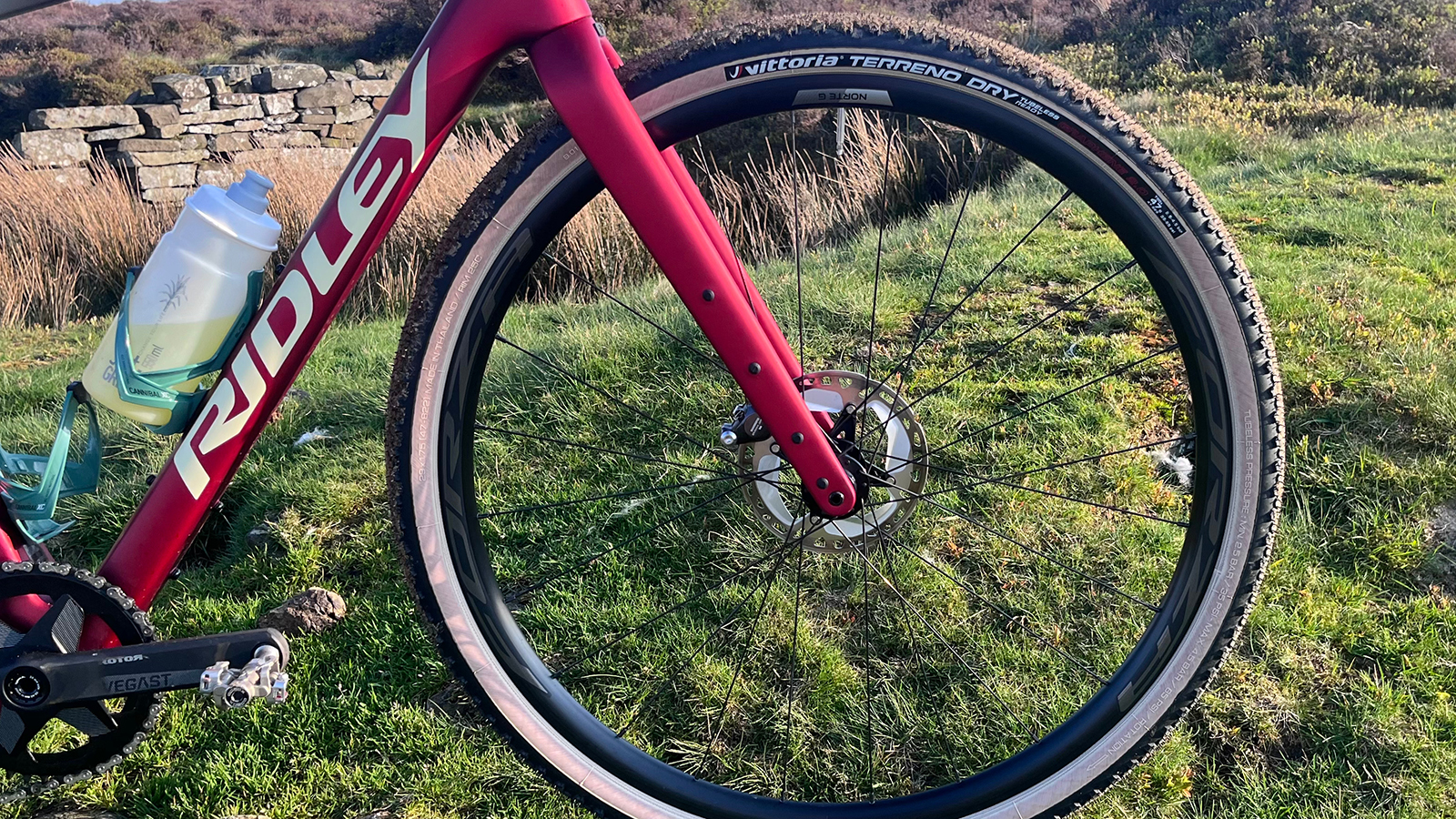
Ride, handling and performance
With its wide tires, relaxed geometry, and mid-range wheels, it's never going to be the fastest bike on smooth Tarmac, but as soon as the terrain gets rough, the Kanzo Adventure really starts to shine. That's not to say it's sluggish or slow, though. Ridley's off-road race heritage shines through with a very engaging ride that felt at home on a wide range of trails and surfaces. It's just that once it gets rough, the Kanzo starts to pull away from other more tarmac-biased gravel machines.
The Vittoria Terrano Dry TLR tire is definitely a summer or dry condition tire, but even so, I found it worked well in the inclement spring we have had here in the UK, with only really muddy sections being a problem. The extra volume and width offered a lot more grip and control than the other bikes I had on test at the time, with 40mm of rubber fitted, which meant I could really push it on more technical trails. It also meant I could run them at a much lower pressure, which again didn't help with tarmac duties but certainly helped off-road.
Handling-wise, I found it great for a wide range of terrain, as you'd expect from a bike designed for adventure. It sits in a nice middle ground between racier road-biased and drop bar MTB-style gravel machines. It's more of a solid, fun all-rounder that's as happy on smooth, fast hardpack as it is on chunkier rocky trails or reasonably technical wooded singletrack.
With its relaxed geometry, wide tires, and aggressively low seatstays, it's also a very comfortable machine. It felt great on longer rides and would be a great partner on multi-day excursions. The plethora of mounting options makes fitting suitable luggage super easy and secure. I never had any issues throughout testing with loose bags or rattling attachments, which is a big plus for me. A noisy bike can drive you mad on long rides.
The contact points were all solid rather than fancy and exciting, but they did the job admirably. The bars were a good shape, with enough flare for me without being too wide, and the aero top section combined with good-quality grippy bar tape made it a comfortable place to be. It's been a long time since I'd ridden a saddle from Selle Italia, but the SLR-specced saddle was comfortable with enough support without being overly soft.
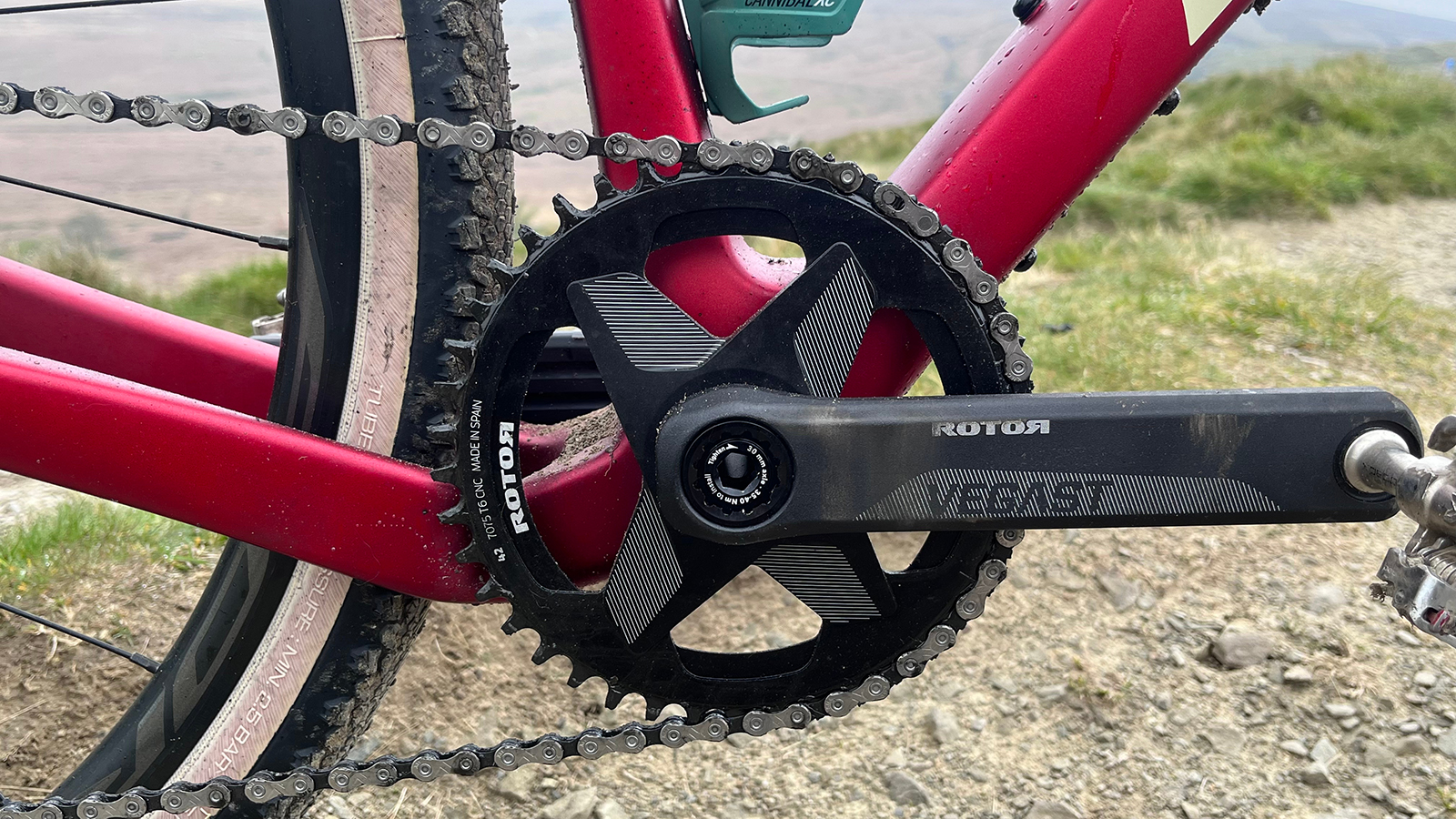
We have talked about the Classified system here before, and unsurprisingly, it's still a great system. Combining the closer ratios of a double chainring with the simplicity of a single ring really is brilliant. However, it was somewhat let down by a poor spec choice chain-wise. The KMC fitted works OK on a budget full Shimano setup, but with the Classified cassette, it's too noisy and not the smoothest of shifts, which felt at odds with its otherwise slick performance. This, combined with the Rotor chainring, creates a somewhat distracting racket when riding, which is easily solved by using a better-quality chain, so bear that in mind if ordering.
Range-wise, the 530 percent on offer was more than enough, even when loaded up on bikepacking adventure duty. I'd occasionally forget there was another effective chainring available though, but after a few rides, I'd become well accustomed to having the right gear ratio nearly all of the time, with none of the big gaps you get on wide-range cassettes.
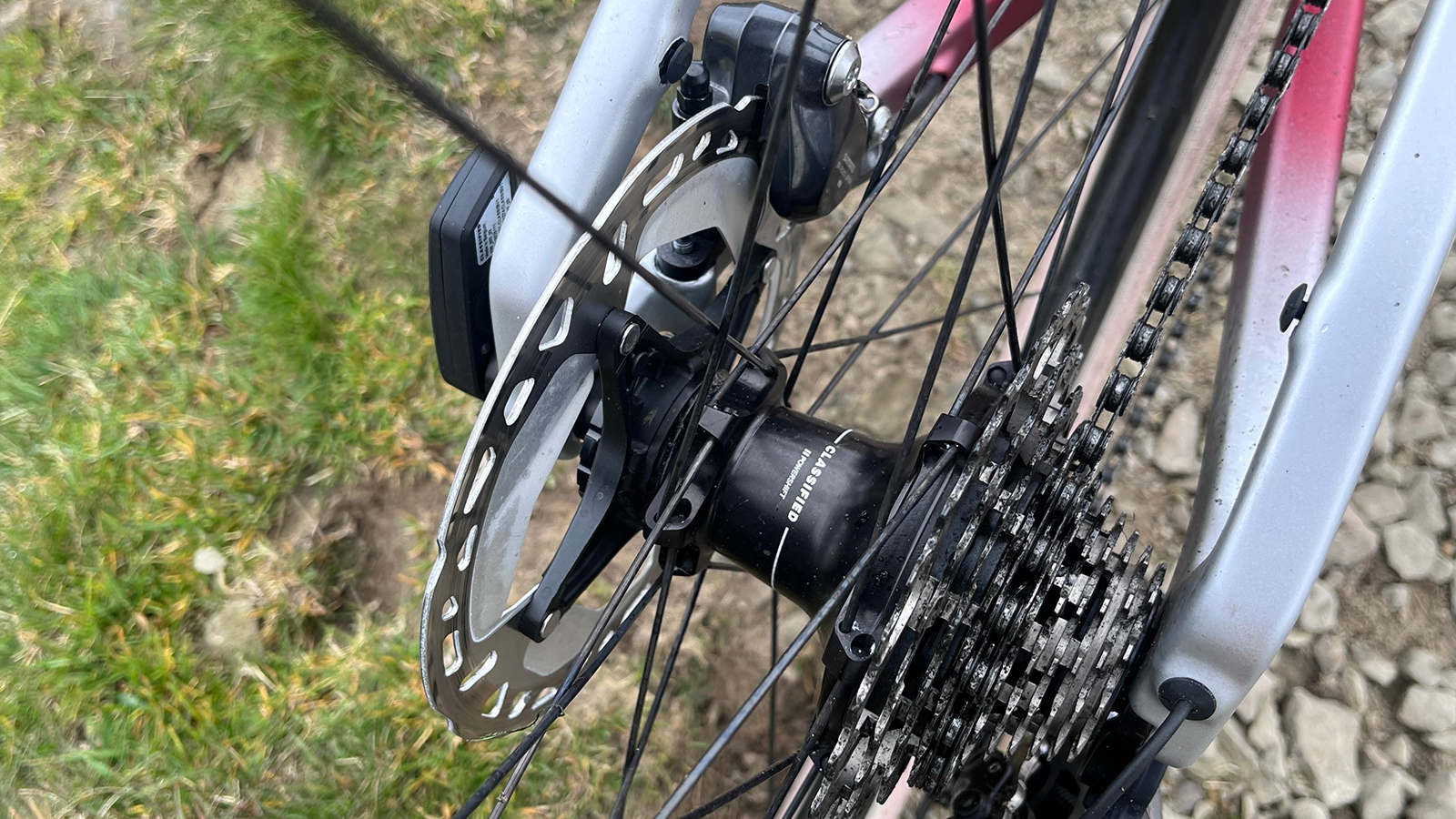
Verdict
I loved riding the Ridley. Its sorted geometry and well-mannered handling made it a great bike for pretty much any terrain I like to ride on a drop bar bike. I found that I would end up riding further than I frequently expected, as its off-road capabilities give you a real feeling of confidence over less able bikes. It's perfect for exploring just one more trail, which I guess is exactly what an adventure bike should do.
The finish and quality were very good throughout, and the ability to spec the bike as you wish and have custom color options is a real bonus. I loved the Classified gears, though the poorly specced chain was a bit of a letdown on an otherwise sorted bike.
All in all, I thought it was a great all-round gravel bike that would be ideal for those who like to ride a bit of everything and fancy the occasional long-range adventure.
| Attributes | Notes | Rating |
|---|---|---|
| Road performance | Big 47mm tires and shallow alloy wheels dull road speed | ★★★★ |
| Off-road performance | MTB-inspired geometry and high-volume rubber give a controlled and composed ride | ★★★★★ |
| Components and build | Classified gearing and Shimano Di2 were great but let down by the poor choice of chain | ★★★★ |
| Value for money | It's not cheap in this build but has plenty of unique features. Custom options make building to your budget easier, though | ★★★★ |
Test conditions
- Conditions: Tarmac road to gravel and mud
- Terrain: Roads, national cycle routes, fire roads, farm tracks, double tracks across moors, singletrack through woods, etc
- Temperature: Spring-like conditions with frequent wet days, temperatures range from 6 to 20 degrees C
Tech specs: Ridley Kanzo Adventure
- Price: $N/A / £6,096 / €6,709
- Discipline: Trail/enduro
- Frame: Carbon
- Fork: Carbon
- Size: Small (tested)
- Sizes available: XS to XL
- Weight: 9kg/19.84 lbs (full bike)
- Groupset: Shimano GRX 815 Di2
- Crankset: Rotor Vegast 30mm axle 42 tooth chainring
- Cassette: Classified 11-34
- Wheels: Forza Norte Alloy
- Tires: Vittoria Terrano Dry TLR 700 x 47mm
- Brakes: Shimano GRX with 160mm rotors
- Bar/stem: Ritchey Butano 44mm wide handlebars, Forza 70mm stem
- Seatpost: Forza Carbon with alloy head
- Saddle: Selle Italia SLR
- Colors: Red to Metallic silver fade (custom options available)

Neal has been riding bikes of all persuasions for over 20 years and has had a go at racing most of them to a pretty average level across the board. From town center criteriums to the Megavalanche and pretty much everything in between. Neal has worked in the bicycle industry his entire working life, from starting out as a Saturday lad at the local bike shop to working for global brands in a variety of roles; he has built an in-depth knowledge and love of all things tech. Based in Sheffield, UK, he can be found riding the incredible local trails on a wide variety of bikes whenever he can
